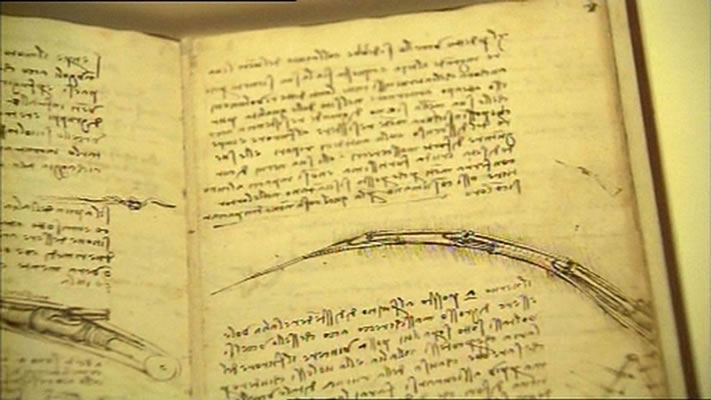The Codex of flying
THE DREAM OF FLYING
The Codex on the Flight of Birds forms at the heart of the great treatise that Leonardo dreamed about but was never able to write. He envisioned himself consigning to posterity a four-volume work in which he revealed the secrets of the physical laws that govern the flight of birds, from which he would have deduced the necessary instructions for constructing a flying machine that could be piloted by man.
The Codex is a small notebook composed of eighteen folia measuring 21 x 15 centimetres, densely filled with sketches, observations and scientific intuitions. It has a simple cover in cardboard, embellished in the nineteenth century by the addition of a more prestigious leather binding and case.
 |
 |
THE NOTEBOOK AND THE MONA LISA
Of the surviving codices by Leonardo, this particular one gives the fascinating impression of having been a notebook that the Maestro likely carried around with him in his pockets in order to record in notes and sketches his thoughts and insights about flight.
It dates to 1505-1506, the same years when Leonardo was painting the Mona Lisa.
THE CODEX’S ADVENTUROUS HISTORY
The Codex on Flight arrived to Torino’s Royal Library after a series of extraordinary journeys and adventures. Its odyssey lasted for four centuries, during which the precious manuscript passed through the hands of a dozen owners, beginning with Leonardo’s designated heir, Francesco Melzi.
Purchased and then forgotten, rediscovered and resold, but also stolen together with other manuscripts by the Maestro, the Codex travelled thousands of kilometres through Europe, from Amboise in France, where Leonardo died, to Paris, London, Milan and even Siberia.
It was donated to the Savoys in 1893 by a Russian Renaissance scholar named Teodoro Sabachnikoff. Of the eighteen original folia, four were missing; these were later reintegrated thanks to other donations.
THE SCIENCE OF FLIGHT IN EIGHTEEN FOLIA
The manuscript documents Leonardo’s meticulous, ingenious observations on the flight of birds, in particular that of the kite. Among other things, he identifies the two fundamental points that make it possible for the bird to remain in the air: the centre of gravity and the centre of resistance of the wings. These form the foundation for the machine that will allow man to remain suspended in the air in a kind of small cage to which are attached two giant mechanical wings fitted with complex joints, capable of moving in relation to the currents of air so that it can remain level, ascend or descend at will. This is the flight of today’s gliders. The artist from Vinci thus arrives just a step away from identifying the laws of aerodynamics that govern flight without motors, recording in the notebook now conserved in Torino, as well as scattering throughout other of his manuscripts, his observations, which constitute the most important treatise on aeronautics written before the nineteenth century.
THE PILOT AND THE CHICKEN
With the depth of thought that typifies him as a designer, Leonardo goes so far as to consider the safety of the pilot of his machine: he envisions a method of protection that consists in surrounding him with wineskins full of water to attenuate the consequences of a possible fall.
On the inside back cover, after so many profound scientific reflections, it is moving to find notes on Leonardo’s day-to-day life: a brief list of money spent, including two soldi for a chicken.
translation by Kim Williams
